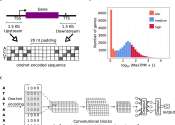Decoding the role of CSB protein in DNA repair
Using the Summit supercomputer at the U.S. Department of Energy's (DOE's) Oak Ridge National Laboratory (ORNL), a Georgia State University (GSU) research team has revealed the structural mechanism of the Cockayne Syndrome ...







